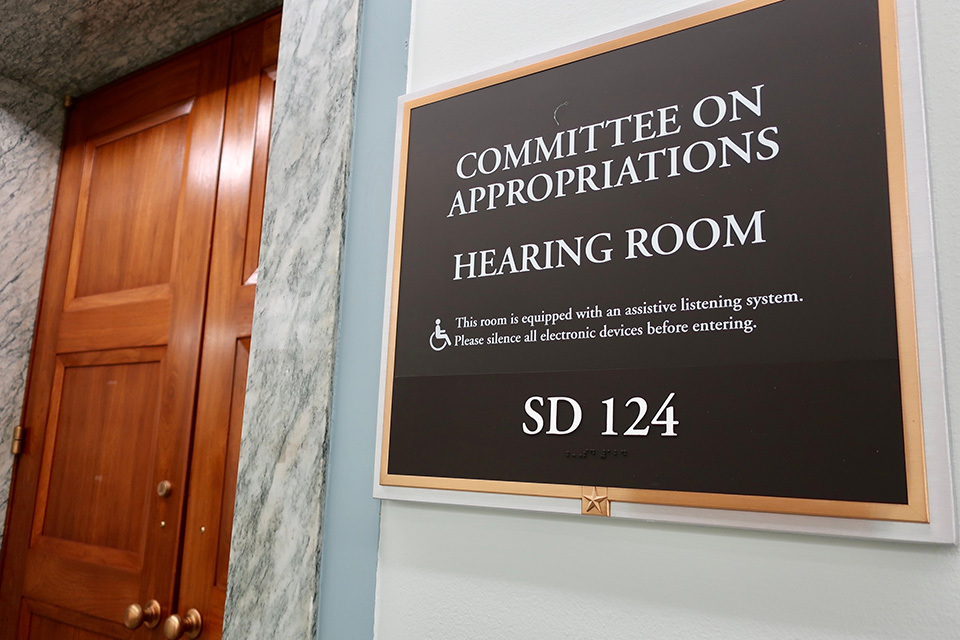Report Published April 29, 2025 · 12 minute read
Protecting Small Business Success: Key Federal Investments for the Next Fiscal Year
Rachel Evans & Imani Augustus

It’s easy to think of federal programs as just faceless budget line items, but they are so much more than that. In particular, federal initiatives that support entrepreneurs are the foundation of American small business success. As Congress deliberates on funding for the upcoming fiscal year, it’s crucial that lawmakers support the entrepreneurs who drive economic growth, create jobs, and pave the way for community success.
This report outlines the essential investments needed to support small business owners through programs like Small Business Development Centers, Women’s Business Centers, SCORE, SBA’s contracting programs, and some lesser-known initiatives. Beyond strategic funding increases, we also advocate for protecting vulnerable programs such as MBDA, SBA Field Offices, and the Microloan Program from cuts. In addition to funding, Congress must implement policy changes that expand federal contracting and export opportunities for small businesses aiming to unlock new markets.
Plus-Up Existing Programs
To enhance support for small businesses, Congress should invest in the very institutions where entrepreneurs are seeking assistance—development centers, field offices, lenders, and local economic agencies.
Small Business Resource Partners—The Small Business Administration’s (SBA) entrepreneurial development ecosystem consists of 63 Small Business Development Centers (SBDCs), 146 Women’s Business Centers (WBCs), and 10,000 SCORE volunteers across 230 chapters. These entities provide low-cost or free advisory services to help small business owners develop and expand their ventures. For example, SBDCs offer one-on-one counseling, helping entrepreneurs navigate challenges at every stage of their business. WBCs provide tailored support for female entrepreneurs, including mentorship, financial literacy training, and preparation for federal contracting opportunities. And SCORE’s network of experienced business mentors provides personalized coaching to entrepreneurs.
Congress allocated $140 million to SBDCs in FY 2025, but more will be needed to support small businesses. In FY 2024, the actual cost of administering the SBDC program was $151.3 million, well above the appropriated amount. Program costs include an operating budget, contracts, compensation, telecommunications, and rent. There’s bipartisan support for an increase to the SBDC program budget, led by Rep. Marie Gluesenkamp Perez (D-WA), Rep. Andrew Garbarino (R-NY), and former Senate Small Business Committee Chair Jeanne Shaheen (D-NH). Congress should increase SBDC funding to $175 million in the next fiscal year to better meet small business needs and to provide room for the program to grow. The Women’s Business Center and SCORE programs have also seen costs rise in recent years. Administrative costs for the WBC program increased by 7% from FY2022 to FY2024 while costs for SCORE rose by 12% over the same period. Congress should give these programs a 3% funding increase across the board to help them combat inflation and continue their critical advisory work.
EDA Economic Adjustment Assistance—In 2024, there were 27 individual weather and climate disasters, which caused more than $1 billion in damages. As extreme weather events become more frequent and severe, residents and small business owners need strong, sustained support to rebuild and spur long-term economic recovery. The Economic Adjustment Assistance (EAA) program—administered by the Economic Development Administration (EDA) —provides flexible, strategic funding to regions facing significant economic disruptions, including natural disasters, mass layoffs, and persistent underinvestment. These funds help communities recover and adapt by supporting efforts such as building broadband infrastructure, launching business incubators and accelerators, or capitalizing local revolving loan funds.
To maintain its effectiveness in the face of rising recovery demands and inflationary pressures, the EAA program should receive a 3% increase in funding. Such an increase would bring the new funding level for the program to $40.7 million. This adjustment will ensure the program can continue to meet the evolving needs of communities and strengthen local economies in the aftermath of disaster.
SBA Empower to Grow Program—SBA’s Empower to Grow Program (E2G), formerly the 7(j) Management and Technical Assistance Program, is dedicated to training small disadvantaged businesses and helping them become contract ready within the federal marketplace. The program offers personalized training in contract management, marketing, compliance, accounting, and other topics to prepare businesses for greater contract opportunities. Its curriculum is led by industry and government experts, giving businesses access to technical assistance and knowledge they might not otherwise have on their own. In 2023, 60% of the E2G participants were awarded a federal contract. The agency also exceeded the target number of firms who showed growth in federal awards by 125%.
Costs for administering the program have increased by almost 50% from FY2023 to FY2024. Congress should give this program a funding boost, bringing its total appropriations to $4.3 million to help more underserved businesses break into the highly competitive federal contracting space.
SBA Microloan Program—SBA’s Microloan Program offers loans up to $50,000 to help small businesses and qualifying child care centers start or expand, with an average loan amount of around $13,000. SBA works with nonprofit intermediaries that not only lend the funds but also offer marketing and management assistance to borrowers. These smaller loans are typically used for working capital or to purchase materials, supplies, and equipment. This is crucial for entrepreneurs who need smaller amounts of capital to get started, as traditional banks typically focus on larger loans for individuals with solid financial profiles.
The SBA has made progress in expanding access to capital at the lower end of the credit market; in 2024, 29% of all SBA-backed loans were for $50,000 or less. However, the flagship 7(a) loan program continues to fall short in reaching underserved communities—only 7% of 7(a) loans in 2024 went to Black business owners, compared to 36% of microloans. This highlights the critical role of the Microloan Program in supporting disadvantaged entrepreneurs. As Congress evaluates funding for FY2026, it should increase the Microloan Program’s budget by 3%, bringing it to $51.7 million.
Protect Against Reductions
In recent months, several executive actions have sought to reduce or modify initiatives supporting small businesses. Given Congress' constitutional authority over federal spending, lawmakers have the responsibility to serve as a check on executive power and ensure that spending priorities reflect broader national interests. Maintaining adequate funding for the following programs is essential, as these resources help entrepreneurs access capital and maintain successful businesses in today's economy.
Minority Business Development Agency—The Minority Business Development Agency (MBDA), housed within the US Department of Commerce, is the sole federal agency dedicated to assisting minority business enterprises (MBEs) overcome social and economic disadvantages. MBDA does this by helping expand MBE access to capital, reach into untapped markets and business contracts, and secure other resources. Through a network of local business development centers, MBDA also carries out its mission by providing technical and business assistance, support and resources, as well as advocacy and research on behalf of MBEs. For example, MBDA’s Access to Capital program ensures that entrepreneurs are ready to apply for loans, contributing to the agency’s success in facilitating $1.5 billion in capital access and securing over $3.8 billion in contract awards for minority business enterprises in FY23.
A recent executive order has directed MBDA to "reduce the performance of their statutory functions and associated personnel to the minimum presence and function required by law." On March 21, all MBDA personnel were placed on administrative leave. As a result, the agency is currently unable to perform any of its statutorily mandated duties—including administering the Business Center program, conducting research and data collection, and hosting the annual diverse business forum—as required by its codifying legislation. Lawmakers must maintain MBDA’s nearly $70 million in funding to ensure its vital programs continue and the law is carried out.
SBA Field Office Staffing—SBA maintains 68 district offices from Tucson to Tampa, which provide local entrepreneurs with hands-on business support. These offices offer more than 10,000 education sessions across the country on topics ranging from financial management to digital marketing. They also connect small business owners to capital resources. In 2023, for example, they facilitated nearly 76,000 loans—70% of which were under $500,000.
In FY 2024, SBA Office of Field Operations operated with a budget of $43.85 million, a $2.45 million reduction from the previous year. These and further reductions in SBA staffing raise significant concerns about the agency's ability to support small businesses nationwide. Recent staff cuts and potential office closures threaten the critical support network that helps entrepreneurs and small business owners navigate economic challenges. Congress should reject any attempts to cut field office personnel and ensure funding remains at least $44 million, maintaining the current level needed to administer the program effectively.
Bank Enterprise Award Program—The Treasury Department’s CDFI Fund runs the Bank Enterprise Award (BEA) Program, which supports banks that invest in CDFIs and distressed communities. The program helps banks provide more funding to CDFIs, offer loans and investments to small businesses in struggling areas, and expand financial services in low-income communities. By doing so, the BEA Program boosts business growth, creates jobs, and improves access to credit. Since FY 2016, it has facilitated $4.3 billion in direct lending to low-income communities and contributed $418 million to CDFIs. In FY 2024, $40 million was allocated for awards.
CDFIs often struggle to raise capital due to their reliance on federal funding, limited access to private investment, and higher operational costs associated with serving underserved communities. Their inability to access secondary markets or attract large institutional investors further restricts their lending capacity. As a result, many CDFIs face ongoing challenges in scaling their impact and meeting the growing demand for equitable financial services. Programs like the Bank Enterprise Award incentivize traditional financial institutions to make investments in CDFIs, amplifying and sustaining their impact.
Recent administrative actions to scale back the CDFI Fund have sparked bipartisan concern among lawmakers who emphasize the Fund’s critical role in promoting job growth and economic prosperity in underserved areas. Given the BEA Program's proven impact on revitalizing distressed communities, Congress should oppose any efforts to reduce the size of the CDFI Fund and ensure that current funding levels for the BEA Program are maintained.
Promote Policy Changes
Beyond funding levels, Congress should direct agencies to make a series of changes around training programs and increased accountability. Specifically:
First Time Entrant Benchmark—Over the last decade, the number of small businesses receiving federal contracts has dropped in half, and the number of new small businesses entering the federal contracting space declined by almost 60%. In FY23, just 1.4% of total obligated dollars went to businesses who had never before received a prime award in the federal marketplace. More than 92% of contract awards went to established vendors.
To tap into new talent, all federal agencies should track first-time small business awardees and set benchmarks to encourage greater participation. A bipartisan bill, the Small Business Procurement and Utilization Reform (SPUR) Act, would include the number of new small businesses entering the federal contracting market as part of each agency’s contracting scorecard. The bill passed the House in February and should quickly be taken up by the Senate. Lawmakers could also work to include the proposal’s instructions in the FY 2026 funding bill to provide the public with transparent information about how well agencies are reaching out to new businesses entering the federal contracting market.
Acquisition Workforce Training—Four decades ago, Congress began implementing federal initiatives designed to level the playing field for small businesses from historically disadvantaged communities by reserving a certain portion of government contracts specifically for them. These “set-aside programs” help businesses compete in the federal marketplace by giving them access to exclusive contracting opportunities. These programs are known today as the 8(a) Business Development Program, the Women-Owned Small Business Program, the Service-Disabled Veteran-Owned Small Business Program, and the Historically Underutilized Business Zones Program.
Although contract awards to these groups have increased in recent years, the federal acquisition workforce continues to face significant challenges, including understaffing, heavy workloads, retention issues, and a lack of adequate training and certification. To optimize contracting opportunities for disadvantaged communities, Congress must invest in strengthening the acquisition workforce. This includes directing the Office of Management and Budget to require federal agencies to expand training and education about set-aside programs and providing clear guidance on refining staffing models to ensure these programs achieve their intended impact.
SBA Export Counselors and Training—The Small Business Jobs Act of 2010 mandates that five individuals or 10% of the staff from each of the lead Small Business Development Centers (SBDCs) be qualified as international trade counselors. Today’s SBDC network is comprised of 62 lead centers, with nearly 1,000 outreach centers located nationwide. Congress should assess compliance with this standard and ensure centers are meeting existing requirements. Congress should also increase funding for the SBA to expand export training efforts and trade counseling activities for Minority Depository Institutions (MDIs) and CDFIs, which serve a higher share of disadvantaged businesses than large banks.
Conclusion
As Congress weighs how best to invest in America’s entrepreneurs, it’s critical to recognize the full spectrum of programs that contribute to small business success—especially those that are often overlooked. Initiatives like the Federal and State Technology Partnership Program, Growth Accelerators, and Regional Innovation Clusters may not receive the same attention as more prominent programs, but they are highly valued by stakeholders on the ground for their direct impact on innovation and local ecosystems. Likewise, the Community Navigator Pilot Program—despite political criticism tied to its pandemic origins—has demonstrated promise as a long-term tool for reaching underserved entrepreneurs. With refinement and continued support, it could play a vital role in building more equitable access to business resources. To build a thriving small business economy, Congress must not only fund well-known programs but also lift up those that deliver outsized impact where it’s needed most.

